The demand for fast internet is higher than ever due to the continuously changing digital world. This also requires changing networking technologies to make communication and data transfer seamless. The HPE Aruba 100G QSFP28 transceivers are among those milestones realized so far; they provide solid solutions for businesses looking to improve their network performance and scalability. This review will discuss its technical specifications, advantages, possible uses, etc., thus giving the reader a broad knowledge of why they are essential for future-proofing network infrastructures. From being able to handle applications with lots of data to allowing effective connections at multi-gigabit levels – HPE Aruba has always stayed ahead when it comes to next-gen networking solutions.
Table of Contents
ToggleWhat is a QSFP28 Transceiver and what is its role in Modern Networks?
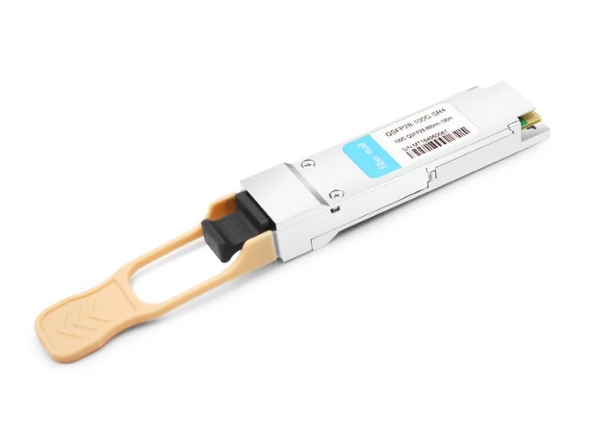
Understanding QSFP28 Technology
Quad Small Form-factor Pluggable 28 (QSFP28) transceivers are important in current networking infrastructure as they are built for 100 Gigabit Ethernet (100GbE) applications. They have four channels, each of which can handle data rates of 25 Gbps, thus aggregating up to a total bandwidth of 100 Gbps. By using methods such as Pulse Amplitude Modulation 4 (PAM4), this technology can increase the data rate of conventional designs without the need for more optical fibers. These transceivers play a critical role in speeding up information exchange within data centers, corporate networks, and high-performance computing environments, which enable businesses to meet higher bandwidth requirements while keeping their networks efficient and scalable. Their plug-and-play nature makes it possible to substitute or maintain them whenever necessary, making them adaptable to changing network landscapes.
Benefits of Using QSFP28 in Data Centers
The employment of QSFP28 transceivers in IT facilities has many key benefits. Initially, by supporting 100 Gbps connectivity, they greatly enhance network throughput, leading to faster data transfer rates and reduced latency necessary for high-demand applications. In the second place, these modules are compact, allowing for more ports per unit area, thereby freeing up space within networking devices, especially where real estate costs are prohibitive. This type of optic transceiver is also notable for its power efficiency since it consumes less energy per gigabit than earlier versions, saving operational expenses and supporting green initiatives. Furthermore, being hot-swappable means quick replacements during maintenance or upgrade procedures without causing any interruptions in service provision so that everything runs smoothly even when things need to be fixed frequently. These advantages position QSFP28s as suitable candidates for use in contemporary data centers that seek peak performance gains with future scalability in mind at all times.
How QSFP28 Enhances Network Performance
QSFP28 transceivers enhance network performance in various ways. They reduce congestion and increase data throughput with a 100 Gbps connection, directly affecting application response time and overall system efficiency. The technology uses higher-order modulation formats such as PAM4 that transmit more bits per symbol, thus maximizing the bandwidth without needing additional physical infrastructure. In addition, it supports multiple protocols like Ethernet or Fibre Channel, ensuring compatibility across different types of networks and making integration easy. QSFP28 transceivers also feature a small form-factor design, which enables more ports to fit within limited spaces while still realizing maximum utilization of available space; these attributes allow for the creation of scalable architectures capable of coping with growing volumes of traffic carried over networks.
Why Choose HPE Aruba for Your QSFP28 Needs?
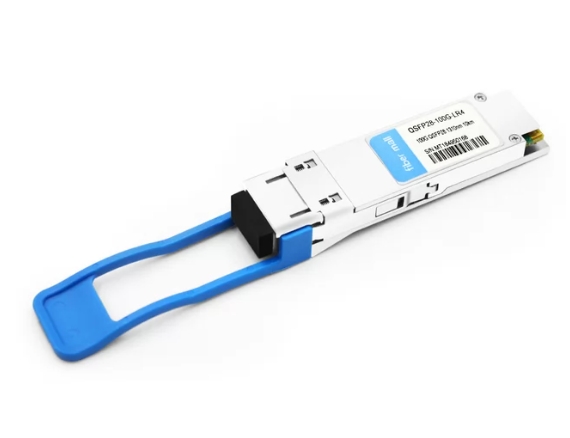
Overview of HPE Aruba’s Offerings
HPE Aruba provides a wide range of networking solutions designed to take advantage of the advanced features offered by QSFP28 transceivers. High-performance switches and wireless access points are part of their lineup, and they can easily blend into current infrastructures for better connectivity and scalability. What sets Aruba apart is its intelligent software capabilities, like AI-based analytics, that improve visibility into network performance management. Furthermore, HPE Aruba prioritizes safety in its networking devices; with this regard they have integrated sophisticated threat detection measures and mitigation functionalities aimed at protecting data integrity. Through strong hardware combined with complex programs, HPE Aruba has established itself as a provider that delivers new-age enterprise networking solutions that cater to all needs.
Advantages of HPE Aruba Networking 100G QSFP28
HPE Aruba’s Networking 100G QSFP28 transceivers provide numerous benefits to enhance network performance and efficiency. The foremost among these is their ability to support high data rates of up to 100 Gbps, which enables organizations to deal with large amounts of data traffic efficiently and makes them perfect for bandwidth-intensive applications like data centers and cloud services. Secondly, the transceiver is designed to reduce latency through improved signal integrity, thereby enhancing application performance overall. Additionally, being energy-efficient products from HPE Aruba helps save on operational costs associated with power consumption and cooling within large-scale environments. Lastly, HPE Aruba ensures seamless interoperability so that QSFP28 transceivers can work effectively across various network architectures, thus providing flexibility even as technology changes.
Compatibility with Existing Infrastructure
The Networking 100 Gigabit QSFP28 transceivers from HPE Aruba are compatible with a wide range of network infrastructures. It also supports different protocols, such as Ethernet and Fiber Channels, ensuring seamless integration into various environments. What’s more, these devices follow the standards set by the industry, making it possible to work well with many networking equipment from different vendors, thus avoiding expensive upgrades. Additionally, HPE Aruba has abundant assistance and documents to help establishments maintain conformity and achieve maximum performance in their current configurations. This emphasis on interoperability enables businesses not only to increase their deployment flexibility but also provide an easy way for them to upgrade to higher data rates without any hitches, hence becoming future-proof investments.
What Are the Types of HPE Aruba 100G QSFP28 Transceivers?
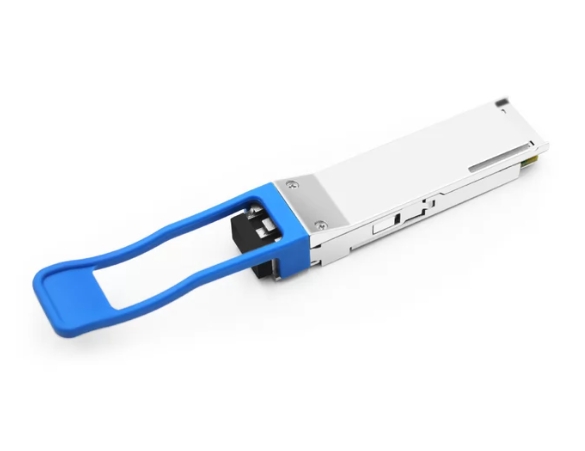
Breakdown of Various Models: SMF Transceiver vs. MMF
HPE Aruba provides two significant kinds of 100G QSFP28 transceivers: Single-Mode Fiber (SMF) and Multi-Mode Fiber (MMF).
Generally, single-mode fiber (SMF) transceivers are made for long-distance transmission and can support up to or more than 40 kilometers, depending on the model and use case. SMF transceivers use only one light mode, thus reducing signal loss and dispersion over greater distances, making them perfect for inter-data center connections and long-haul telecommunications.
Conversely, multi-mode Fiber (MMF) Transceivers work with short-range applications that can cover about 300 meters at most. MMFs allow multiple light modes to propagate simultaneously, enabling higher bandwidths over shorter distances. These types of transceivers suit data centers and enterprise networks where high data throughput is needed within relatively small areas.
Each type of these transceivers plays a critical role in different networking needs, and their choice is influenced by distance requirements, network architecture, and overall performance objectives, among other factors.
Unique Features of HPE Aruba 100G QSFP28 LC ER4L
The HPE Aruba 100G QSFP28 LC ER4L transceiver was built to cater to high-performance networking environments. Here are the main features:
- Extended Reach: With a distance range of 40 kilometers, this variant can transmit across single-mode fiber over long distances. This feature is suitable for interconnecting data centers and campus networks.
- High Bandwidth: To guarantee sufficient bandwidth availability for data-intensive applications, the ER4L provides 100 Gbps data rates by effectively utilizing four lanes of 25 Gbps per channel.
- Enhanced Reliability: The component has been designed using advanced thermal and signal integrity technologies, which enhance reliability in different environmental conditions and extend the component’s life cycle.
- Compatibility: HPE Aruba’s QSFP28 transceivers work with many network equipment, ensuring easy integration and minimal additional configuration.
- Low Power Consumption: Being energy efficient means that this device consumes less power than other high-speed transceivers, hence saving on costs during large-scale deployments.
All these features combine to make enterprises choose the HPE Aruba 100G QSFP28 LC ER4L when they want to expand their networks without causing disruptions while maintaining good performance.
Understanding Direct Attach and Optical Cable Options
In networking, there are two main categories of cabling: Direct Attach Copper (DAC) cables and Optical Fiber cables. Each one has its use case and benefits, depending on the situation.
- Direct Attach Copper (DAC) Cables: These cables are made from copper wire and are mostly used for short-range connections, usually within the same rack or adjacent racks. They offer a low-cost solution with simple plug-and-play installation and lower power consumption compared to optical options. DAC cables can effectively support data rates of up to 100 Gbps and are designed for high-speed links in environments such as data centers that require cost efficiency and low latency.
- Optical Fiber Cables: Optical fiber cables utilize light to transmit information over longer distances, which can be several kilometers or even more, thus being suitable for interconnecting between data centers or across large campus networks. They provide significantly higher bandwidth capacity than any other cable type and are less prone to electromagnetic interference, ensuring more reliable transmission. Fiber cables can reach distances exceeding 40 kilometers depending on the transceiver used, which is advantageous when scaling up network infrastructures in growing environments.
Knowing the dissimilarities between DAC and optical fiber options is crucial for network designers and engineers who want to optimize performance while reducing costs associated with their networking solutions’ lifecycle management. The correct selection should be based on specific needs like distance requirements, data rate expectations, and environmental conditions, among others, as well as financial considerations at hand.
How to Select the Best HPE Aruba QSFP28 Solution?
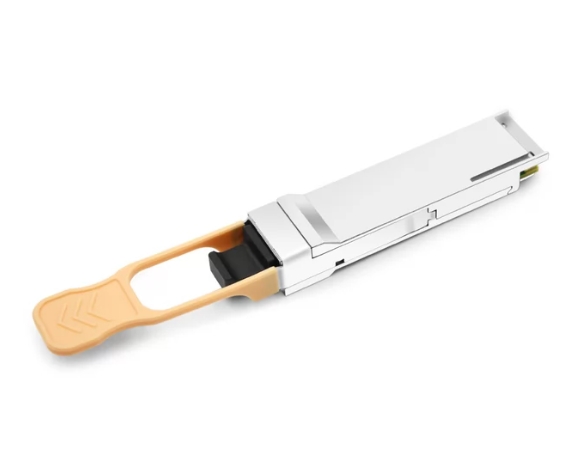
Factors to Consider: Distance, Speed, and Application
When choosing an HPE Aruba QSFP28 solution, there are three main considerations: distance, speed, and application-specific requirements.
- Distance: The right cabling solution should be chosen based on transmission distance. Active optical cables (AOCs) within data centers can reach around 100 meters with minimal signal degradation. On the other hand, standard optical fiber cables using single-mode fiber can transmit data for several kilometers, which is suitable for large campus networks or inter-data center links. You need to look at your network’s physical layout so that the selected cable meets the required distance specifications without compromising signal integrity.
- Speed: For high-bandwidth applications like cloud computing, big data analytics, or massive virtualization, HPE Aruba QSFP28 often supports 100 Gbps. However, depending on what you want it used for later, maybe both uplink/downlink speeds should be taken into account in addition to possible upgrades. You should consider video streaming throughputs or real-time processing needs when deciding between DACs and fibers.
- Application: Different applications have different needs, which affect the choice of cabling. Environments with low latency trading or high-frequency trading, for example, may benefit from DAC’s lower latencies, while scalable networks requiring more bandwidth over longer distances like those found in clouds would usually prefer optical fibers; thus, one must evaluate their specific traffic patterns, etcetera, to come up with the best operational fit among various available HPE Aruba QSFP28 solutions.
Expert Tips for Choosing the Right Transceiver Module
- Compatibility: Ensure the system can work with the current network infrastructure. Before choosing one, check whether your routers or switches support the transceiver module. Many vendors have compatibility matrices for this purpose.
- Performance Metrics: Evaluate performance requirements such as data rate, distance, and environmental conditions. Select a module that meets or exceeds these needs not to create bottlenecks in data transmission.
- Cost vs. Value: Consider initial costs as well as long-term value. Although it might appear attractive to choose cheap options, they usually have low-performance levels or high failure rates, thereby increasing the total cost of ownership. Evaluate warranties and support services provided during purchase since they may affect overall lifecycle costs.
- Future Proofing: Consider future networking demands. Therefore, you should select transceiver modules that allow scalability and upgrades, thus ensuring that the solution remains relevant to changing requirements when the network grows.
- Vendor Reputation: Research different vendors and how they are perceived within this industry. This guarantees reliability and support while minimizing potential networking issues caused by substandard components from less-known manufacturers.
Evaluating the Cost-Effectiveness of Different Solutions
When examining different transceiver modules for cost efficiency, an all-encompassing approach is necessary to evaluate these options regarding immediate outlays and long-term consequences.
- Original Investment vs. Longevity: Evaluate the initial investment required for each module, its lifetime, and dependability; some modules might be expensive but reliable, saving you money on replacements and downtime over time.
- Total Cost of Ownership (TCO): Calculate TCO based on the installation costs, maintenance fees, and probable replacements during the module’s life cycle. Sometimes, what seems like a cheap module at first may have a higher TCO due to frequent failures or the need for maintenance.
- Performance Effectiveness: Assess how well every solution meets performance criteria, such as data throughput and operating environment. Higher-performing solutions can enhance operational efficiencies, reduce delays, and multiply returns on investments.
- Scalability and Future Requirements: When evaluating cost-effectiveness in this area alone, consider scalability regarding future needs. Such considerations would involve choosing transceiver modules that can easily handle more data traffic or accommodate additional features over time because they will eventually be more valuable.
This evaluation process ensures that decisions are made based on a wide range of understanding of costs versus benefits so as to select economically applicable solutions.
What Are the Installation and Maintenance Tips for QSFP28 Transceivers?
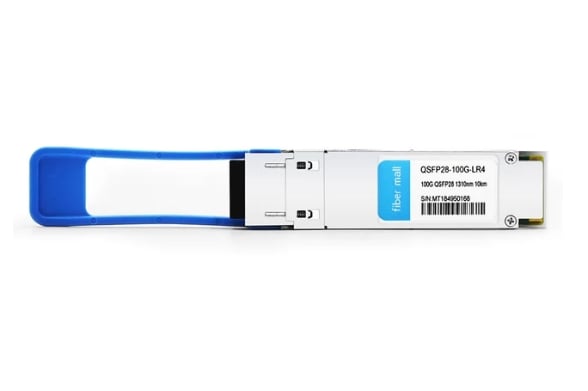
Step-by-Step Installation Guide
- Preparatory Measures: Before installing, ensure you possess the right compatible QSFP28 transceiver modules and equipment. Power off devices to prevent electrical harm during setup.
- Examine the Transceiver: Remove the transceiver from its wrapping and carefully examine it for any signs of physical damage or dust. Avoid touching the optical connectors to maintain cleanliness.
- Find Out The Port: Determine which port in your network switch or router is suitable for use with a transceiver. Confirm that it supports QSFP28 modules, which are required for proper functioning.
- Put In The Transceiver: Align the port and transceiver by ensuring their connectors match perfectly. Insert gently until firmly locked into place; listen for a click sound indicating a good connection has been made.
- Cable Up: Connect appropriate cables such as MPO/MTP if multi-fiber connections are used or directly attach copper cables. Check for correct alignment of connectors, which should be tightened securely to enhance signal integrity.
- Power Up & Test: Switch on the network device after plugging in transceivers with their respective cables attached; watch status indicators until module recognition is confirmed successful, then operational status is established.
- Record Documentation: Document installation details, such as the module type used and associated ports/connections involved. This will come in handy later during maintenance or troubleshooting exercises.
Following these steps, one can successfully install QSFP28 transceivers required for high-speed data transmission in modern networking environments.
Maintenance Best Practices to Ensure Longevity
To make sure that QSFP28 transceivers last long and work well, follow these tips:
- Clean regularly: Clean optical connectors with lint-free wipes and isopropyl alcohol occasionally. Proper cleaning stops dust buildup, which can interfere with the signal.
- Temperature control: Keep network devices within their recommended temperature range. The performance and lifespan of a transceiver can be affected negatively by extreme temperatures. Ensure good ventilation in the installation environment.
- Functional monitoring: Employ network management tools to track transceiver behavior and performance. Regularly test for link failures, error rates, or unexpected disconnections, as they may indicate potential problems that require immediate attention.
By adopting such measures, QSFP28 transceivers will operate reliably over an extended period and perform well in challenging network environments.
Common Troubleshooting Techniques
Here are some recommended troubleshooting methods when having problems with QSFP28 transceivers:
- Evaluate Connections: Confirm that all connections are secure and seated correctly. If a transceiver is loose or misconnected, it may fail to link with another device.
- Test Cable Integrity: Examine cables for wear or damage. A cable tester can determine whether an issue, such as a break or signal loss, could affect performance.
- Validate Compatibility: Make sure the transceiver matches your network equipment in specifications or firmware versions; otherwise, this can cause connectivity problems and result in suboptimal performance.
- Monitor heating: Tools that read temperature levels around a transceiver can tell you how hot it is running. If it is overheating, look at what cools it down and ensure ventilation is good enough.
- Upgrade Firmware: Always check if the manufacturer provides new updates because old ones may interfere with its functions, creating compatibility errors and improving speed.
These generic troubleshooting steps help users identify issues commonly associated with QSFP28 transceivers, enabling them to fix such challenges faster without necessarily affecting normal network operations.
Reference Sources
Frequently Asked Questions (FAQs)
Q: What is an HPE Aruba 100G QSFP28 Transceiver?
A: A high-speed networking module for data centers, campus networks and service provider infrastructures that provides 100 Gigabit Ethernet connectivity over fiber cables for high bandwidth and low latency.
Q: What are the different types of Aruba Networking 100G QSFP28 modules?
A: Different types of HPE Aruba Networking 100G QSFP28 modules are SR4 MMF Transceiver, 100G QSFP28 LC ER4L 40km, 100G QSFP28 LC ER4L 10km and QSFP28 LC ER4L 2km modules.
Q: How much range does the module ‘100G QSFP28 LC ER4L 40km’ support?
A: The module ‘100G QSFP28 LC ER4L 40km’ supports a single-mode fiber (SMF) range of up to forty kilometers, which makes it suitable for long-distance data transmission.
Q: Can I use MPO connectors with Aruba Networking 100G QSFP28 modules?
A: Yes. MPO connectors are commonly used with SR4 and other multi-fiber connections supported by different Aruba Networking 100G QSFP28 modules for high-density, high-speed networking.
Q: What kind of cables should I use with my QSFP28 transceivers?
A: For short-range applications with HPE Aruba 100G QSFP28 modules, OM3 and OM4 fiber patch cables are recommended, while single-mode fibers (SMF) should be considered for longer ranges. Depending on your setup, DAC (Direct Attach Copper) and breakout cables are options.
Q: Can HPE Aruba 100G QSFP28 modules be tested?
A: Yes, they can. However, not just any test will do – HPE Aruba has a stringent program to guarantee that these 100G QSFP28 modules meet the highest performance and reliability standards. They are validated on various platforms, such as the 8325, 8360 & 8400 series, for compatibility and performance.
Q: Where can I buy Aruba Networking 100G QSFP28 modules?
A: You can buy them at HPE Store US or through authorized resellers. However, product availability and estimated delivery times may vary depending on your location and your chosen reseller.
Q: What are breakout cables used for with QSFP28 modules?
A: Breakout cables enable a QSFP28 module to divide its output into lower-speed connections. For instance, a one hundred gigabit Ethernet connection provided by a single 100 GbE QSFP28 module can be split into four twenty-five gigabit Ethernet connections using breakout cables. This feature allows for more flexible bandwidth utilization and connection to multiple devices simultaneously.
Q: How can I ensure that HPE Aruba 100G QSFP28 modules are compatible with my current network?
A: To ensure compatibility, please review the specifications of your existing switch/router infrastructure (including models) against those required by HPE compute/storage solutions; if necessary, you may also want to consult an authorized representative or reseller from Hewlett Packard Enterprise (HPE).
Related Products:
Related posts:
- Next-Gen Data Transfer: SFP112/QSFP112/QSFP-DD800/OSFP 800G DAC
- Everything You Need to Know About CWDM Transceivers: From SFP Modules to 80km Optical Fiber Connectivity
- The Ultimate Guide to SGMII SFP Transceivers: Everything You Need to Know About Optical Transceivers and Ethernet Ports
- Unraveling the World of 400ZR: Enhancing DCI Networks with QSFP-DD and DWDM up to 120km.


